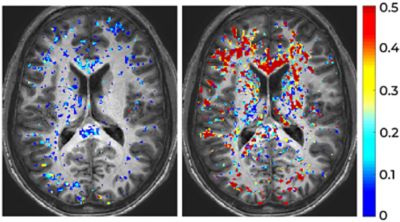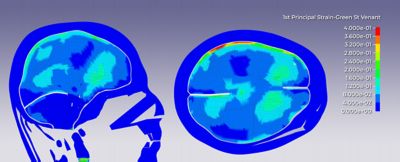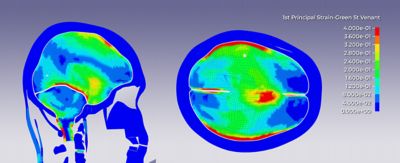-
-
Kostenlose Software für Studierende
Ansys unterstützt die nächste Generation von Ingenieur*innen
Studenten erhalten kostenlosen Zugang zu erstklassiger Simulationssoftware.
-
Verbinden Sie sich jetzt mit Ansys!
Gestalten Sie Ihre Zukunft
Stellen Sie eine Verbindung mit Ansys her, um zu erfahren, wie Simulation Ihren nächsten Durchbruch vorantreiben kann.
Länder und Regionen
Kostenlose Demoversionen
Produkte & Dienstleistungen
Lernportal
Über das Unternehmen
Back
Produkte & Dienstleistungen
Back
Lernportal
Ansys unterstützt die nächste Generation von Ingenieur*innen
Studenten erhalten kostenlosen Zugang zu erstklassiger Simulationssoftware.
Back
Über das Unternehmen
Gestalten Sie Ihre Zukunft
Stellen Sie eine Verbindung mit Ansys her, um zu erfahren, wie Simulation Ihren nächsten Durchbruch vorantreiben kann.
Kostenlose Demoversionen
ANSYS ADVANTAGE MAGAZINE
DATE: 2020
Sudden Impact: Simulating MMA Head Shots
By Stephen Tiernan
Senior Lecturer of Mechanical Engineering
Institute of Technology Tallaght
Dublin, Ireland
As the number of head injuries continues to accelerate in mixed martial arts and across many other sports, physicians struggle to accurately diagnose concussions. Using Ansys LS-DYNA, doctors can determine the magnitude and location of brain strains, enabling them to improve concussion treatment.
Clinicians are unclear about how to measure the damage incurred by head impacts and diagnose concussions as magnetic resonance images (MRIs), computed tomography (CT) scans and blood tests often deliver inconclusive results. Concussions are a mild form of traumatic brain injury typically suffered in sports activities.
Dr. Michael Power leads clinical care at Beaumont Hospital in Dublin, Ireland, which specializes in treatment of head injuries — many of which occur during contact sports. Several years ago, he aligned with CADFEM Ireland — Ansys’ channel partner in Ireland — on a mission that would combine engineering simulation with clinical expertise to research the mechanisms of concussion. They sought to understand whether simulation software could help define the causes of concussions, reduce their number and improve concussion treatment.
A successful demonstration would validate simulation as a crucial tool for clinicians to guide management of sport-related concussions.
MRI of concussed MMA fighter, pre- and post-event
CADFEM Ireland, together with Institute of Technology Tallaght (ITT) researchers, welcomed the challenge. The team relied on science to quantify head impacts, which required brain strain measurements and Ansys LS-DYNA simulations, with CADFEM Ireland providing technical support, Amazon Cloud services and software licensing.
The concussion research also incorporated Dr. Matthew Campbell’s Genetics Department team at Trinity College Dublin (TCD) who pioneered a novel method that analyzes contrast-enhanced MRI images to determine blood–brain barrier changes of MMA fighters pre- and post-fight. Additionally, doctors at St. James Hospital Dublin medically screened the fighters before and after the fights.
Researchers collected head acceleration data during mixed martial arts (MMA) matches and used that information in a finite element analysis (FEA) of a human head digital model to identify and measure strains on the brain. MMA is a full-contact competitive sport featuring a combination of fighting styles spanning boxing, kickboxing, karate, wrestling, judo and jiu jitsu. Fighters wear lightweight gloves but no head protection.
Researchers studied MMA fighters because frequent blows to the head in matches would enable the collection of significant head acceleration data, providing unique insights into head movement following impact.
The simulation strain data, MRI data and medical screenings enabled the group to understand the nature, severity and location of the brain changes that occurred following severe head impacts.
Previewing the Future: Making Sports Safer
Leveraging mouthguard sensors and LS-DYNA simulation data extends beyond MMA because instrumented mouthguards will soon become commercially available. Athletes will have access to their acceleration data — but what will they do with it? What does the data mean?
Today, when an athlete experiences a high-acceleration impact, the player leaves the game, allowing doctors to perform a clinical assessment and determine when the player can return. In the future, by applying an LS-DYNA simulation-based workflow, clinicians can obtain a player’s acceleration level, rapidly run the model in the cloud, convert that into strain levels and calculate the levels across different parts of the brain. Receiving that data, the doctor can make a clinical interpretation and a highly accurate assessment for determining when the player can return to the game.
Using this technology, an athlete’s acceleration-level data could be collected and stored in the cloud over years, to be used later for clinical analysis. For example, when a player visits a hospital following a severe impact, the clinician could access the player’s acceleration-level history, assess the most recent strain level, arrive at a diagnosis and deliver an accurate assessment.
Another potential use would be to monitor and manage children’s health in sports. Kids could wear inexpensive sensor-equipped mouthguards that would alert parents via text message if their child suffered a serious impact.
As the child matures, the cloud could be used to collect and store brain strains that occur during sports activities. This data would enable doctors to run many models over time, helping them to ascertain the accumulation of strain and damage.
And as the cloud stores the data, it could also update the person’s digital twin — their virtual copy. The two would be digitally intertwined, enabling people to stream mouthguard sensor data to their virtual counterparts, which, in turn, generates predictive, informed insights for clinicians.
Brain strain of an uninjured MMA fighter showing the sagittal and transverse sections
Brain strain of concussed MMA fighter showing the sagittal and transverse sections
Gearing Up With Sensors
To effectively measure head accelerations and severity of impacts, researchers needed an accelerometer for capturing input data. They evaluated numerous accelerometers ranging from sensors affixed to an athlete’s ear to sensors attached to headbands. These sensors produced some slippage between the sensor and the skull that affected the accuracy.
Researchers ultimately selected a mouthguard device with six degrees of freedom (DOF). It included a tri-axial accelerometer and gyroscope that recorded linear acceleration and angular velocity of impacts. Engineered by Stanford University, the mouthguards were created using a dental impression that helped it closely couple with the fighter’s skull for improved accuracy.
But sensor data alone cannot tell the full story. Researchers used a digital version of the human model developed by the Global Human Body Models Consortium (GHBMC) — a state-of-the-art full-body model developed by a conglomeration of automotive manufacturers and American universities — to decipher strain, pressure and stress. Using the whole body proved unnecessary because short-duration acceleration impacts — typically between five and 10 milliseconds — affect only the head and neck. By reducing the model and isolating the head and neck, researchers decreased computational time. The revised model, comprising approximately 200,000 elements, measured accelerations that focused on a head’s center of gravity.
Researchers selected LS-DYNA simulation software — one of the few explicit solvers capable of measuring head impacts of very short duration — to run on the GHBMC. This would help determine the location and magnitude of strains experienced by the brain and enable understanding of what causes damage and concussions.
Anatomy of an Mma Fight
For the study, researchers analyzed 25 elite amateur and professional MMA fighters, recording more than 400 head impacts across eight sparring sessions and eight competitive matches.
During fights, microchips within fighter mouthguards collected linear data at 1,000 Hz and angular velocity at 8,000 Hz, filtering the data with a fourth-order Butterworth low-pass filter equipped with a cutoff frequency of 300 Hz. Mouthguards recorded data only when linear acceleration levels surpassed 10 g. Researchers leveraged numerical differentiation to calculate rotational acceleration.
Following each fight, researchers connected the mouthguards to a laptop via Bluetooth, downloading tremendous amounts of head acceleration data.
Next, researchers synchronized the acceleration data with fight video recordings, analyzing the videos frame by frame to find and select impacts with the highest angular acceleration levels — typically above 20 g to 30 g — as those often produce concussions.
LS-DYNA was then used to run the selected impact loads on the head of the digital GHBMC’s model, transposing the data to nodes at the head’s center of gravity and also into a coordinate system that exhibited the same coordinate system of the model. Additionally, the angular velocity data was differentiated to obtain the angular acceleration. The simulation required just three and a half hours to run, using 36 cores on Amazon Cloud.
Comparing fighters’ pre-season MRI scans and post-fight MRI scans with the simulation data enabled researchers to correlate the high-strain areas to reveal if impacts disrupted the blood–brain barrier in those areas, causing a concussion.
Ls-dyna Simulation Wins Big
LS-DYNA proved vital for determining the location and magnitude of brain strains, as well as providing detailed insights on the mechanism of the impact, which would not be possible without simulation. Results revealed that fighters are far more vulnerable to side-head impacts, which create more strains. Following a side hit, as the head suddenly twists, its rotational acceleration sends dangerous mechanical vibrations to the collosum area of the brain — a bundle of nerves that acts as the communication center, connecting the brain’s left and right hemispheres. Damage to the corpus collosum area of the brain disrupts data transmission between hemispheres, potentially leading to concussions and severe neurological issues.
Just as important, LS-DYNA also helped researchers establish strains, strain rates and pressure data to define the thresholds below which injuries do not occur.
Additionally, this research marked the first time LS-DYNA and MRI imaging established a correlation to show blood–brain barrier damage within a particular location. That validation drove further confidence in the simulation model.
Clinicians and sports authorities ultimately strive to prevent serious head injuries. That can be accomplished once they better understand the blows that could potentially lead to serious trauma, and simulation enhances that understanding.
This method of traumatic brain injury research could be applied to other sports to develop enhanced equipment, such as reinforced helmets that could counter the consequences of side-head impact. Furthermore, by analyzing the most dangerous blows, the related sports authorities could adjust rules to prevent dangerous impacts in the future.
Los geht's
Wenn Sie mit technischen Herausforderungen konfrontiert sind, ist unser Team für Sie da. Mit unserer langjährigen Erfahrung und unserem Engagement für Innovation laden wir Sie ein, sich an uns zu wenden. Lassen Sie uns zusammenarbeiten, um Ihre technischen Hindernisse in Chancen für Wachstum und Erfolg zu verwandeln. Kontaktieren Sie uns noch heute, um das Gespräch zu beginnen.



